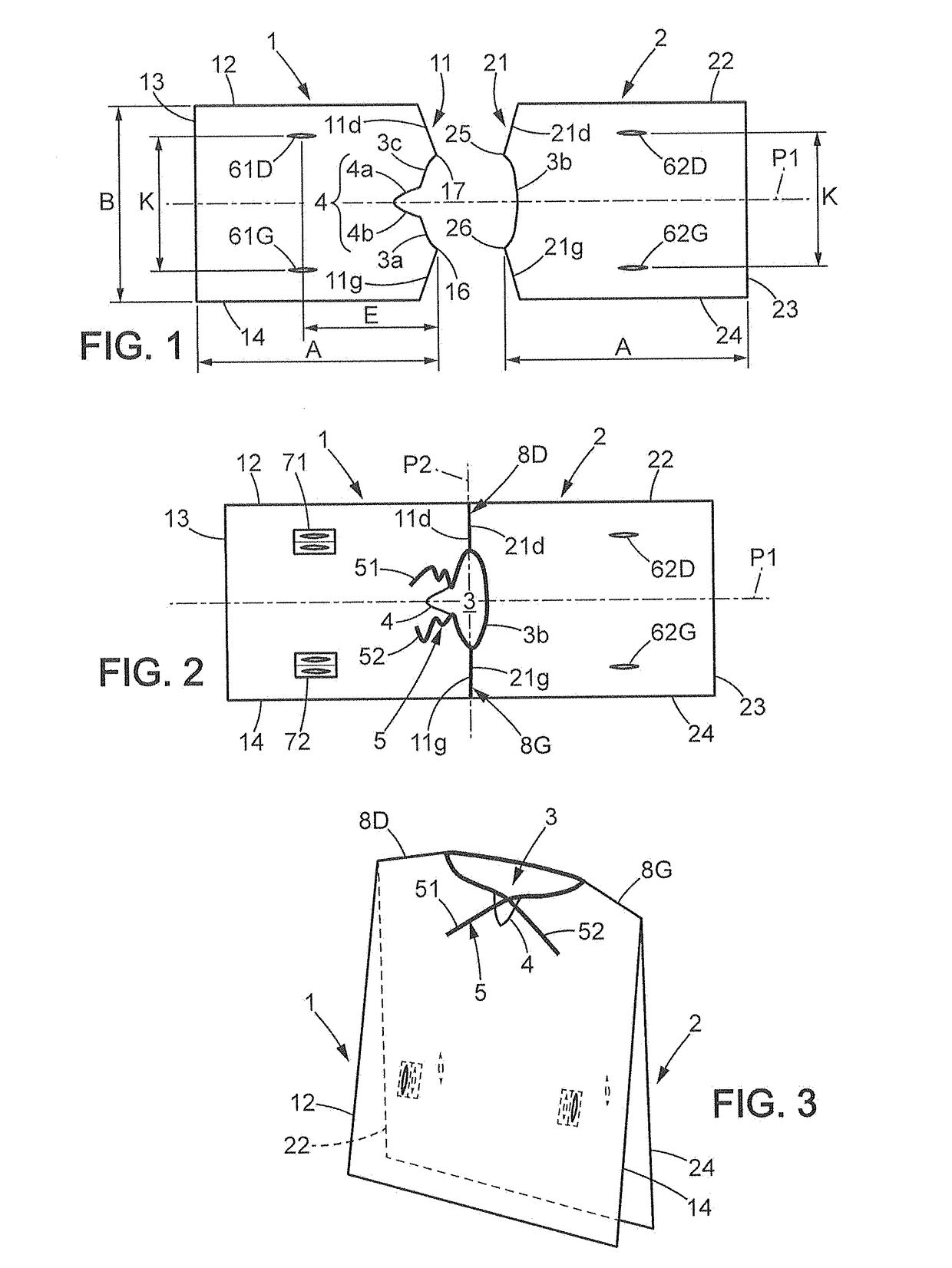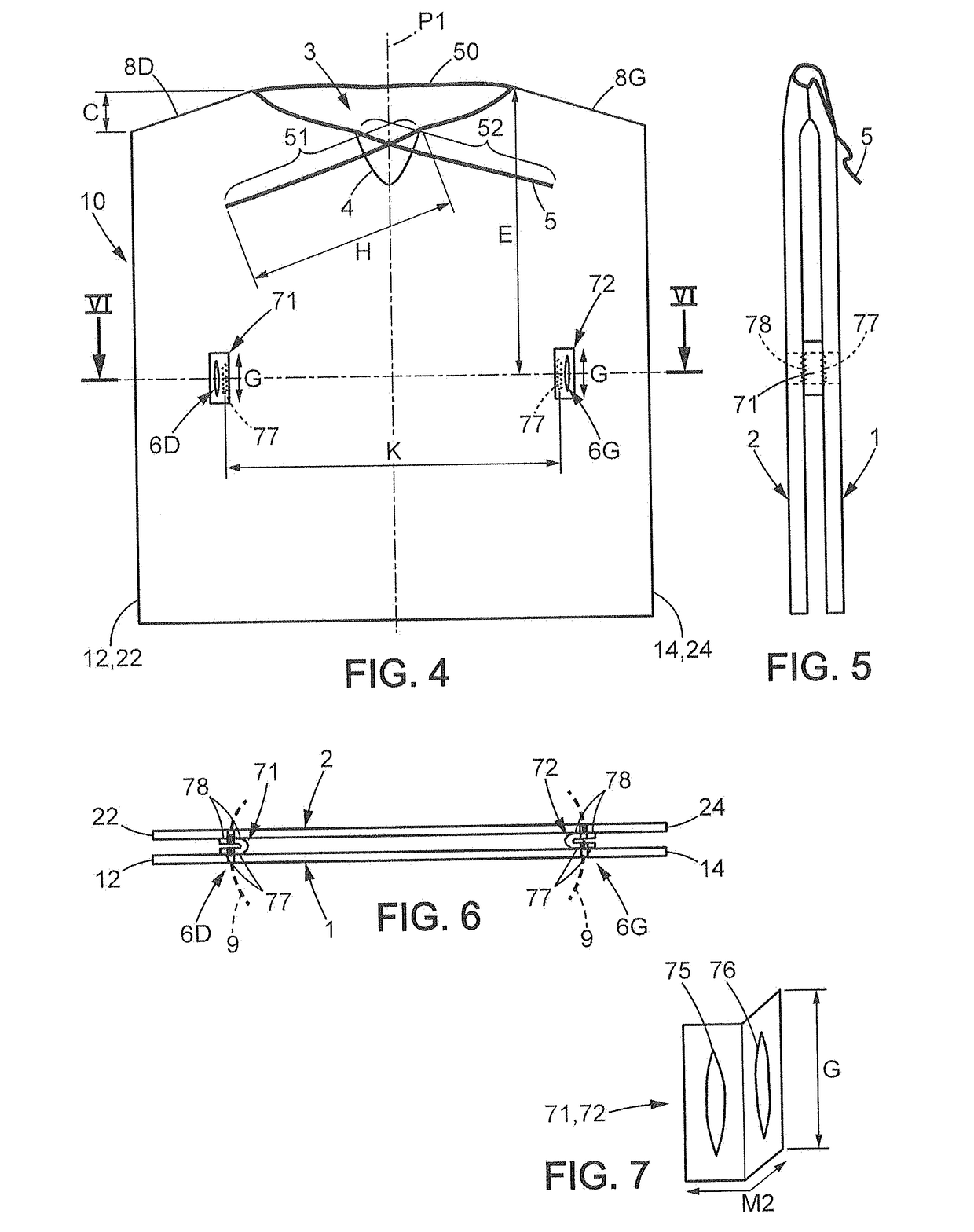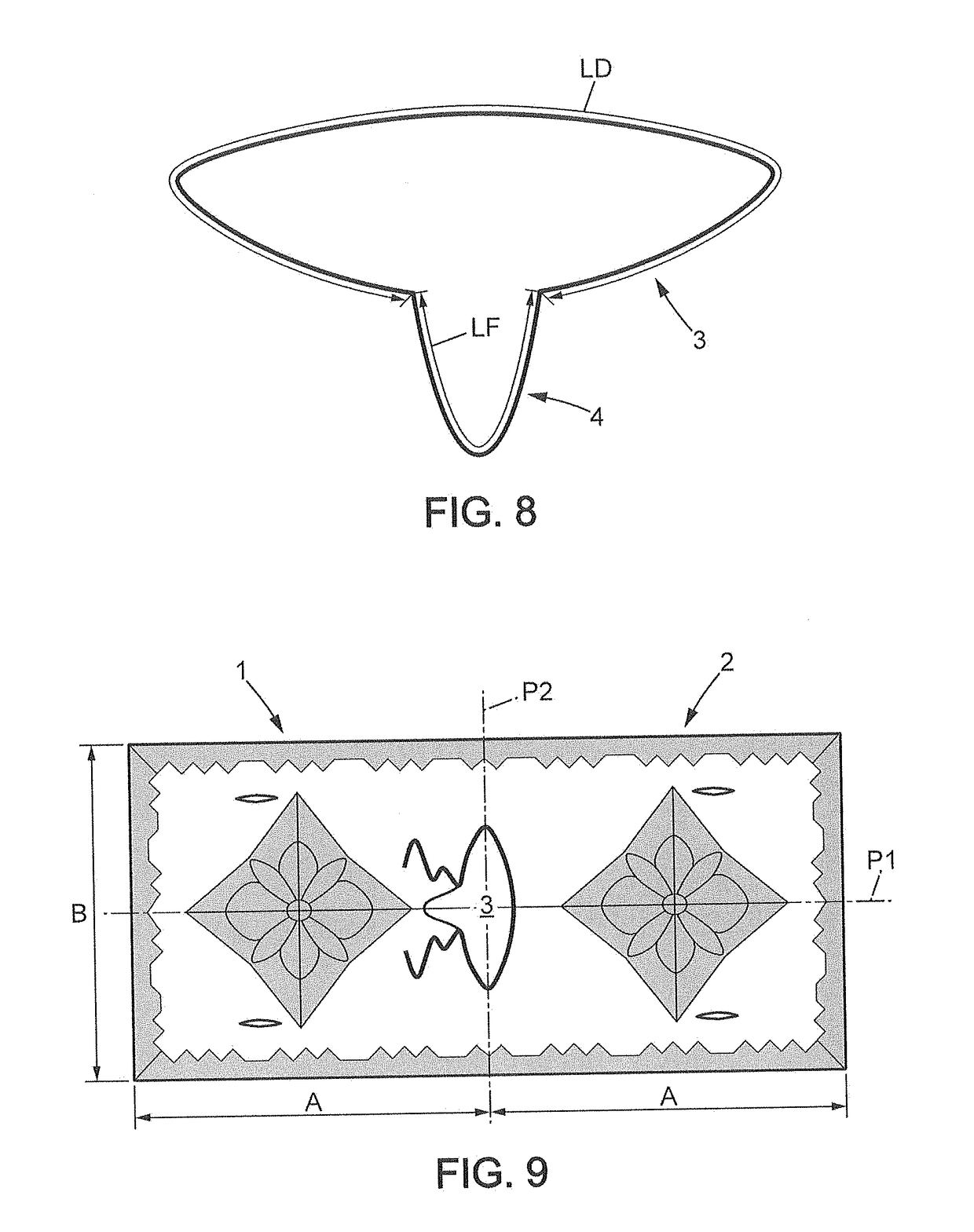Convertible Garment
a technology of convertible garments and garments, applied in the field of convertible garments, can solve the problems of difficult user configuration and configuration of such a piece, and achieve the effect of facilitating user customization and customization
- Summary
- Abstract
- Description
- Claims
- Application Information
AI Technical Summary
Benefits of technology
Problems solved by technology
Method used
Image
Examples
first embodiment
[0045]FIGS. 1 to 3 present the different steps of fabrication of a convertible garment complying with the present invention.
[0046]First two rectangular pieces of cloth are cut, they will form the front panel 1 and the back panel 2 of the final garment.
[0047]For a garment a longitudinal plane of symmetry P1 is defined; when the garment is worn, this plane should coincide with the midsagittal plane of the wearer.
[0048]The first piece of cloth 1 that will become the front panel has a slant / inclined border 11 aimed to be attached to the second piece of cloth 2, a second straight border 12, a third straight border 13 on the opposite side of the first border 11, and a fourth straight border 14 on the opposite side of the border 12.
[0049]The second piece of cloth 2 that will become the back panel has a slant / inclined border 21 aimed to be attached to the first piece of cloth 1, a second straight border 22, a third straight border 23 on the opposite side of the first border 21, and a fourth...
second embodiment
[0079]In the second embodiment shown in FIG. 9, the front and back panels are made from a single piece of cloth, in this example there is no seam at the shoulder area, the junctions 8D, 8G are achieved with the continuity of the cloth. Notice also that the lateral border is continuous from the front panel to the back panel, and the pattern of the border may extend continuously without discontinuity, which is favourable from an aesthetic point of view. In this example, the shoulder fit denoted by the dimension C is null (flat shoulder line)
third embodiment
[0080]In a third embodiment shown in the FIGS. 10A10B, there are provided seamed connections 71′, 72′ which may replace at respective locations the passages from the two prior embodiments.
[0081]In the shown example, the seamed connection 71′ which is made out of a small piece of cloth a few centimetres long (dimension G), and a few centimetres wide (dimension M2), this piece being sewed from one side to the front panel and from the other side to the back panel without buttonhole nor slit. It is the same for the left seam connection 72′ which is similarly assembled symmetrically to the sagittal plane P1. The distance K separating the two seamed connections may be slightly different from the configuration with the belt passages.
[0082]In another version even more simplified, not shown, the seamed connections are simply made out of seams between the front panel and the back panel without intermediary part.
[0083]In other possibilities not shown, in the case where the belt passages are sh...
PUM
 Login to View More
Login to View More Abstract
Description
Claims
Application Information
 Login to View More
Login to View More - R&D
- Intellectual Property
- Life Sciences
- Materials
- Tech Scout
- Unparalleled Data Quality
- Higher Quality Content
- 60% Fewer Hallucinations
Browse by: Latest US Patents, China's latest patents, Technical Efficacy Thesaurus, Application Domain, Technology Topic, Popular Technical Reports.
© 2025 PatSnap. All rights reserved.Legal|Privacy policy|Modern Slavery Act Transparency Statement|Sitemap|About US| Contact US: help@patsnap.com



